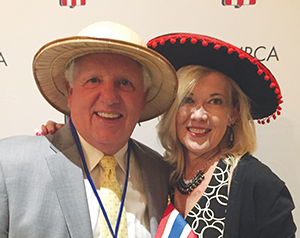DOL announces interim rules to adjust penalties for inflation
In response to the Federal Civil Penalties Inflation Adjustment Act Improvements Act passed by Congress in 2015, the Department of Labor (DOL) has announced two interim final rules to adjust its penalties for inflation based on the previous time each penalty was increased. The act directs agencies to adjust their penalties for inflation each year using a more straightforward method and required agencies to publish their interim final rules by July 1 to make up for lost time since the most recent penalty adjustments. DOL will accept public comments for 45 days to inform the publication of any final rule.
DOL's first rule will address a majority of penalties assessed by the department's Employee Benefits Security Administration, Mine Safety and Health Administration, Occupational Safety and Health Administration (OSHA), Office of Workers' Compensation Programs, and Wage and Hour Division. The second rule will be issued jointly with the Department of Homeland Security to adjust penalties associated with the H-2B temporary guest worker program.
The new method will adjust penalties for inflation though the amount of any increase is capped at 150 percent of the existing penalty amount. The new penalty amounts only apply to civil penalties assessed after Aug. 1 for violations that occurred after Nov. 2, 2015.
The new rules will modernize some penalties that have lost ground to inflation, including OSHA's maximum penalties which have not been raised since 1990. Under the new rules, OSHA's maximum penalties will increase 78 percent: The top penalty for serious violations will increase from $7,000 to $12,471, and the maximum penalty for willful or repeat violations will increase from $70,000 to $124,709.
"Civil penalties should be a credible deterrent that influences behavior far and wide," says U.S. Secretary of Labor Thomas E. Perez. "Adjusting our penalties to keep pace with the cost of living can lead to significant benefits for workers and can level the playing field for responsible employers who should not have to compete with those who don't follow the law."
For additional information about DOL's interim rules, visit www.dol.gov/sites/default/files/2016-inflation-factsheet.pdf. To view a list of each agency's individual penalty adjustments, go to www.dol.gov/sites/default/files/2016-inflation-penalty-chart.pdf.
FAA issues final rule to regulate commercial drone usage
The Department of Transportation's Federal Aviation Administration (FAA) has issued a new rule for the commercial use of small unmanned aircraft systems (UAS), commonly referred to as drones. The rule, effective Aug. 29, offers safety regulations for drones weighing less than 55 pounds that are conducting nonhobbyist operations.
Under the final rule, a drone operator must be at least 16 years old, have a "remote pilot in command" certificate and keep the drone within a visual line of sight at all times. The new regulations also address height and speed restrictions and other operational limits, such as prohibiting flights over unprotected people on the ground who are not directly participating in the drone operation.
"With this new rule, we are taking a careful and deliberate approach that balances the need to deploy this new technology with the FAA's mission to protect public safety," says FAA Administrator Michael Huerta. "But this is just our first step. We're already working on additional rules that will expand the range of operations."
NRCA issued a response praising the FAA's drone rule and describing the effect the rule may have within the roofing industry.
An excerpt of NRCA's statement follows:
"NRCA believes the new rules issued by the FAA on the commercial use of unmanned aircraft systems will provide significant new opportunities for the use of such aircraft in the roofing industry.
"NRCA believes the final rule is a reasonable one and is especially pleased the FAA listened to some of the concerns NRCA expressed during the rulemaking process.
"The FAA rule contains a provision for waivers to some of its rules that, for example, should allow drones to be flown at night in situations where they don't pose any danger.
"NRCA believes drone use can be of enormous benefit to the roofing industry over time. Drones can be used to evaluate existing roofs, help prepare estimates for new roofs, conduct thermal imaging and even measure reflectivity performance. And the use of drones will mean fewer people will need to be exposed to rooftop hazards to conduct routine inspections."
NRCA's full statement is available at www.nrca.net/0616-Drones. Additional information about the rule is available at www.faa.gov/news/press_releases/news_story.cfm?newsId=20515.
The Alliance supports Building a Healthy Neighborhood campaign
The Roofing Industry Alliance for Progress has approved a $10,000 sponsorship in support of Rebuilding Together®'s Building a Healthy Neighborhood campaign scheduled for Sept. 23-24 in Cleveland.
The event will take place in the city's Slavic Village community where more than 600 volunteers will provide critical home repairs, energy-efficiency updates, and numerous health and safety modifications to 10 houses during two days. The volunteers also will clean neighboring homes to rejuvenate the entire community. The Building a Healthy Neighborhood campaign will help stabilize the community by assisting current long-time residents as they work to rebuild and remain in their homes.
To learn more about the Slavic Village community in Cleveland and the Building a Healthy Neighborhood campaign, visit www.nrca.net/Files/pdf/0616-alliance-rebuilding-together.pdf.
Roofing contractor receives citations for safety violations
The Occupational Safety and Health Administration (OSHA) has cited Coastal Building Systems of Amelia Inc., Fernandina Beach, Fla., for safety violations after inspectors observed employees working on a residential roofing project without fall protection, according to www.osha.gov.
On June 3, OSHA issued one willful citation and one repeated citation with proposed penalties totaling $108,500. The willful citation was issued to the employer for not ensuring workers were properly protected from falls up to 8 feet, and the repeat violation was issued for allowing workers to use powered nail guns without eye protection.
OSHA has inspected the company 12 times since 2010, and eight of the inspections resulted in willful, repeat or serious citations for lack of fall protection and other hazards. After the company's most recent violations, OSHA may place Coastal Building Systems of Amelia in its Severe Violators Enforcement Program, which focuses on uncooperative employers that repeatedly endanger their workers by committing willful, repeat or failure-to-abate violations. The program allows OSHA to inspect any of the employer's facilities if it has reasonable grounds to believe there are similar violations occurring.
"Despite previous citations and penalties, Coastal Building Systems continues to willfully and repeatedly ignore worker safety," says Brian Sturtecky, OSHA's area director in Jacksonville, Fla. "The company's management corrects hazards while inspectors are at the job site, but allows hazards that put workers at risk of serious injury or death to return once inspectors leave."
Coastal Building Systems of Amelia has 15 business days from receipt of its citations and penalties to comply, request a conference with OSHA's area director or contest the findings before the independent Occupational Safety and Health Review Commission. Coastal Building Systems of Amelia is not an NRCA member.
NRCA leaders and guests attend NRCA's Midyear Meetings

Conway and Ryan at the NRCA photo booth during Midyear Meetings |
NRCA's Midyear Meetings, held July 12-16, attracted 223 NRCA leaders and guests to The Four Seasons Hotel in Chicago. NRCA's Executive Committee, board of directors, committees and task forces met to discuss NRCA and industry issues and plan for NRCA's 2016-17 fiscal year.
On July 13, 99 guests attended ROOFPAC's Night @ Navy Pier event. The attendees enjoyed dinner and drinks and networked with colleagues at Chicago's famous 100-year-old attraction. The event raised more than $15,000 to benefit ROOFPAC.
The following evening, NRCA leaders and guests attended NRCA's Installation Dinner and Reception where outgoing Chairman of the Board Lindy Ryan, senior vice president of Tecta America Southeast LLC, Sanford, Fla., was recognized for her service during the past year. And Chairman of the Board Dennis Conway, principal of Commercial Roofers Inc., Las Vegas, was presented with a gavel to mark the start of his term.



